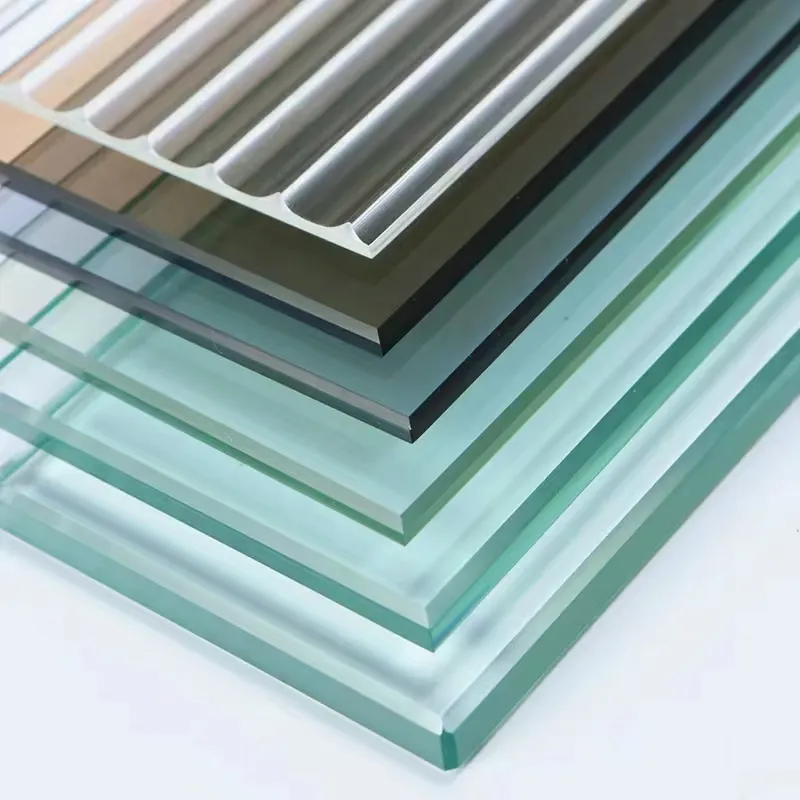Understanding Clear Annealed Float Glass Properties, Uses, and Benefits
Clear annealed float glass is a fundamental material widely used in the construction, automotive, and furniture industries, among others. Its production, characteristics, and applications highlight its versatility and importance across various sectors. This article will explore the properties, manufacturing process, and benefits of clear annealed float glass.
What is Clear Annealed Float Glass?
Clear annealed float glass is a type of glass that is produced through the float glass process. During this process, molten glass is floated on top of molten tin, resulting in a smooth, flat surface. The term annealed refers to the controlled cooling process that helps relieve internal stresses within the glass, leading to improved durability and uniformity. As a result, clear annealed float glass offers excellent optical clarity, high transparency, and a flawless finish.
Properties of Clear Annealed Float Glass
One of the standout properties of clear annealed float glass is its exceptional clarity. The glass is free from any significant tint, allowing maximum light transmission. This characteristic makes it ideal for applications where visibility is crucial. Moreover, clear annealed float glass has a uniform thickness, which contributes to its aesthetic appeal and functional performance.
The glass is also relatively easy to cut, shape, and fabricate, making it a preferred choice for a wide variety of applications. Its surface is smooth and can be enhanced with coatings to improve insulation, UV protection, or energy efficiency. Additionally, clear annealed float glass has good resistance to environmental factors like moisture and humidity, making it a suitable option for both indoor and outdoor applications.
Manufacturing Process
The float glass manufacturing process involves several key steps. Initially, raw materials such as silica sand, soda ash, and limestone are combined and melted at high temperatures in a furnace. Once this mixture forms molten glass, it is poured onto a surface of molten tin. The glass spreads out and flattens due to gravity, creating a uniform thickness.
clear annealed float glass
The next stage is annealing, where the glass is slowly cooled in a controlled environment to prevent thermal shocks. This process enhances the physical properties of the glass, including its strength and resistance to breakage. Finally, the glass is cut to size and may undergo additional processing based on customer specifications, such as polishing or coating.
Applications of Clear Annealed Float Glass
Clear annealed float glass is utilized in numerous applications due to its desirable properties. In commercial and residential construction, it is commonly used for windows, facades, and interior partitions. The glass allows natural light to penetrate while providing a clear view of the outside, enhancing the aesthetic appeal of buildings.
In the automotive industry, clear annealed float glass is employed in windshields and side windows, where visibility and safety are paramount. Its clarity and durability make it suitable for demanding environments.
Additionally, the glass is widely used in furniture design, such as tabletops and display cases, where a sleek appearance is desired. It can also be found in various decorative applications, including mirrors and glass doors.
Benefits of Clear Annealed Float Glass
The benefits of clear annealed float glass are numerous. Its excellent optical properties ensure that spaces are bright and welcoming. The glass is also cost-effective, making it an economical option for both large-scale and small projects. Furthermore, its ease of maintenance allows for straightforward cleaning and care over time, ensuring long-lasting transparency and beauty.
In conclusion, clear annealed float glass is an essential material with broad applications across various industries. Its clarity, durability, and versatility make it a preferred choice for architects, designers, and manufacturers alike. As technology advances, it is likely that the production methods and applications of this remarkable material will continue to evolve, increasing its significance in modern construction and design.
 Afrikaans
Afrikaans  Albanian
Albanian  Amharic
Amharic  Arabic
Arabic  Armenian
Armenian  Azerbaijani
Azerbaijani  Basque
Basque  Belarusian
Belarusian  Bengali
Bengali  Bosnian
Bosnian  Bulgarian
Bulgarian  Catalan
Catalan  Cebuano
Cebuano  Corsican
Corsican  Croatian
Croatian  Czech
Czech  Danish
Danish  Dutch
Dutch  English
English  Esperanto
Esperanto  Estonian
Estonian  Finnish
Finnish  French
French  Frisian
Frisian  Galician
Galician  Georgian
Georgian  German
German  Greek
Greek  Gujarati
Gujarati  Haitian Creole
Haitian Creole  hausa
hausa  hawaiian
hawaiian  Hebrew
Hebrew  Hindi
Hindi  Miao
Miao  Hungarian
Hungarian  Icelandic
Icelandic  igbo
igbo  Indonesian
Indonesian  irish
irish  Italian
Italian  Japanese
Japanese  Javanese
Javanese  Kannada
Kannada  kazakh
kazakh  Khmer
Khmer  Rwandese
Rwandese  Korean
Korean  Kurdish
Kurdish  Kyrgyz
Kyrgyz  Lao
Lao  Latin
Latin  Latvian
Latvian  Lithuanian
Lithuanian  Luxembourgish
Luxembourgish  Macedonian
Macedonian  Malgashi
Malgashi  Malay
Malay  Malayalam
Malayalam  Maltese
Maltese  Maori
Maori  Marathi
Marathi  Mongolian
Mongolian  Myanmar
Myanmar  Nepali
Nepali  Norwegian
Norwegian  Norwegian
Norwegian  Occitan
Occitan  Pashto
Pashto  Persian
Persian  Polish
Polish  Portuguese
Portuguese  Punjabi
Punjabi  Romanian
Romanian  Russian
Russian  Samoan
Samoan  Scottish Gaelic
Scottish Gaelic  Serbian
Serbian  Sesotho
Sesotho  Shona
Shona  Sindhi
Sindhi  Sinhala
Sinhala  Slovak
Slovak  Slovenian
Slovenian  Somali
Somali  Spanish
Spanish  Sundanese
Sundanese  Swahili
Swahili  Swedish
Swedish  Tagalog
Tagalog  Tajik
Tajik  Tamil
Tamil  Tatar
Tatar  Telugu
Telugu  Thai
Thai  Turkish
Turkish  Turkmen
Turkmen  Ukrainian
Ukrainian  Urdu
Urdu  Uighur
Uighur  Uzbek
Uzbek  Vietnamese
Vietnamese  Welsh
Welsh  Bantu
Bantu  Yiddish
Yiddish  Yoruba
Yoruba  Zulu
Zulu 

